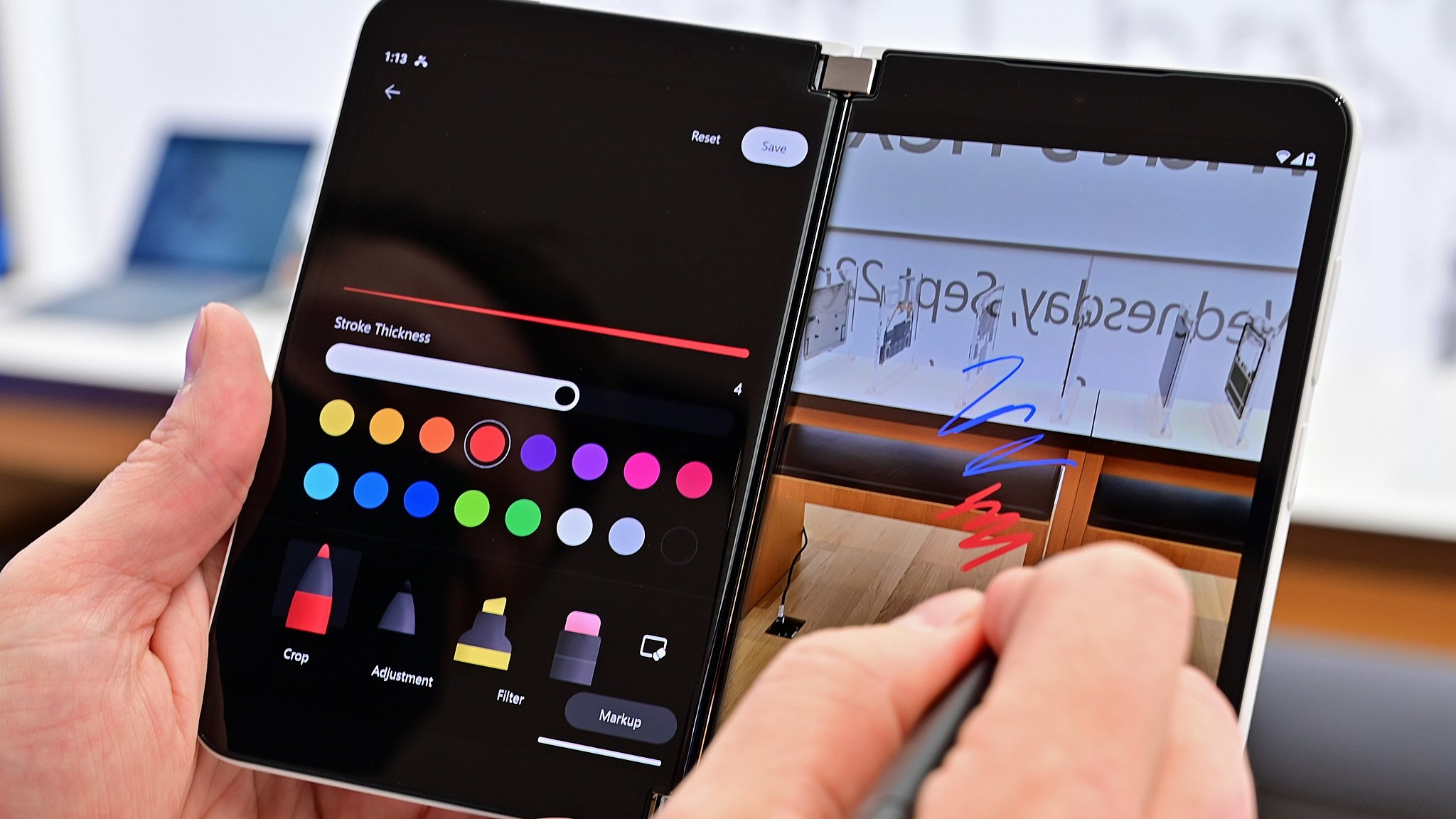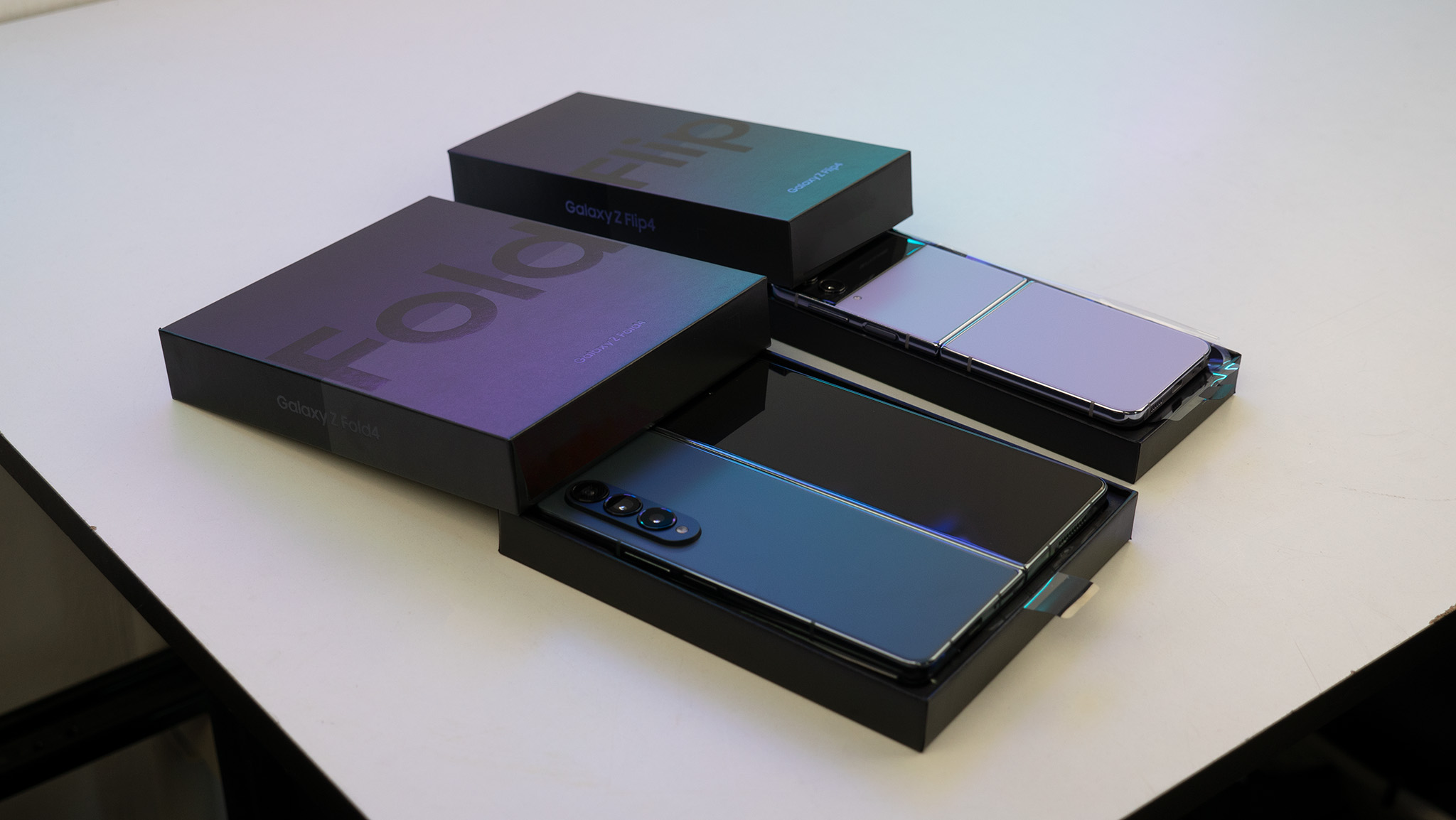Where are all the dual-screen phones like the Surface Duo?
Foldable displays are slowly becoming all the rage, but dual-screen phones have had very little time in the spotlight.

Samsung's new foldables have been available for a couple of weeks and have received glowing reviews. It's no surprise, as Samsung has been on a crusade to make foldable phones less of a niche product. However, with so much focus being put on folding displays, I can't help but wonder why we don't see more dual-screen folding phones on the market.
Microsoft seems to be the only major player investing in dual-screen folding phones with the Surface Duo line. However, the form factor seems like a natural step between standard smartphones and folding displays, one that Android OEMs have mostly skipped in favor of folding displays.
It's not like it hasn't been done before, although with mixed results. ZTE launched the Axon M in 2017, albeit at a time when Android wasn't quite ready for this type of device. LG also experimented with dual screens, although it made them optional by selling a second screen as an add-on for phones like the LG V60.
Things were a bit better, although the solution was a bit clunky, especially due to the large gap between the displays, and there was little support for this extra display. The LG Wing is also technically a dual-screen phone, although in a slightly different way, and was ultimately the company's last major launch before leaving the market altogether.
The original Surface wasn't perfect, and suffered from an old chipset, middling specs, and an absurdly high price tag. However, the Surface Duo 2 has addressed many of those complaints, proving that dual screens can work.
Dual screen displays vs. folding displays

When it comes to dual-screen phones, they have a lot of similarities to the best foldable phones, as the larger display area makes them great for multitasking and spanning apps across a larger surface area. However, there are notable differences between the two.
Foldable phones have the benefit of one continuous display that folds in half. However, it's likely more expensive to produce, and there's the added concern of fragility, which Samsung and other OEMs have been working hard to address with each generation.
Get the latest news from Android Central, your trusted companion in the world of Android
Meanwhile, dual-screen devices have two separate displays that work in tandem, and are likely cheaper to develop than the one. Plus — depending on how you look at it — they have the added benefit of keeping the displays protected when the device is closed. Foldables typically sport an external display, which can be used to perform more basic smartphone tasks — although that leaves them exposed to the elements.
Foldable phones aren't for everyone, indicating there might be a market for dual-screen phones.
Windows Central's Daniel Rubino recently explained why he prefers the Surface Duo over the Galaxy Z Fold 4, stating that the experience was more consistent due to the lack of a smaller external display, which he says can slow down the overall experience. “On Fold 4, you get a notification, turn on the cover display, see it, and now if you want to respond to it, you must either use the cramped outer screen or open the phone for tablet mode.” Because the Surface Duo has two internal displays, he can get things done “with less effort,” and without having to deal with the distraction of the external display.
Surely not everyone feels the same way, but there are bound to be enough people that agree with Rubino to warrant more investment in these types of devices.
There’s also this idea that foldable phones are continuously being “perfected” due to the fragile nature of their displays. Samsung has been working to improve its foldables to convince consumers that they can and will be a thing, touting every year the strides it’s taken to make the hinge better, the displays stronger, and the phones more durable.
However, that’s not really a concern with dual-screen devices, as they just work using the same standard displays we’re used to with traditional smartphones. There’s no messing around with Ultra-Thin Glass, no concerns about the display creasing, or how many folds it can handle before it cracks.
Yes, there is always a minimal gap between the displays on dual-screen phones, and the Surface Duo is far from a perfect phone. However, there's generally less of a concern over durability when it comes to these devices, and the device represents a big step for the form factor.
A dual-screen phone could be Samsung's missing link

One way to get dual-screen phones out there would be to have the largest Android OEM making them. SamMobile recently expressed that it's time Samsung launched a cheaper variant of the Galaxy Z Fold line.
"The Galaxy Z Fold series is fantastic, but it still is held back by its steep price," SamMobile's Mihai Matei writes. "Since Samsung doesn't seem to be able to lower the Z Fold series' price further in due time, perhaps the next-best solution to close the gap between the $999 Galaxy Z Flip and the $1,799 Galaxy Z Fold is to release another, cheaper Galaxy Z Fold variant."
Analysts also agree that Samsung has a sizeable gap between its foldable phones that should be filled.
Samsung needs a cheaper foldable option, and perhaps dual-screen is the way to achieve that.
While their solution might boil down to another phone with a folding display, perhaps the answer is a dual-screen folding phone. Microsoft's Surface Duo 2 already costs a few hundred dollars less than the Galaxy Z Fold 4, so a Samsung-built dual-screen phone could bridge that price gap between the Flip and Fold series. Given that Samsung has made a point to have a smartphone in just about every price point, it would be the easiest way to squeeze in another option for consumers. That way, consumers have an option to consider between the outrageously expensive Z Fold, and the more palatable Z Flip.
Samsung has already shown interest in blowing up its foldable displays for a larger tablet/PC offering, per some concept devices that were revealed earlier this year. However, as noted by Windows Central, Windows 11 is not yet ready for folding PCs, and lacks the optimizations that Android has recently built into the OS.
Microsoft notably canceled its Windows 10X project, delaying the highly-anticipated Surface Neo, and instead opting to only launch the Android-powered Surface Duo. Samsung could go a similar route and hold off on its PC ambitions while making dual-screen devices more mainstream with an Android phone, just as it's done with foldables.
Google has already done the work on the backend to support larger-screen devices with Android 12L and Android 13, which notably includes dual-screen phones like the Surface Duo, thanks to collaborations with Microsoft. Samsung has also proven that One UI is up to the task when it comes to supporting all types of devices.
Dual-screen phones aren’t the future, but they can be the now

While Samsung strives to get foldable phones off the ground, the form factor isn't quite as mainstream as one might think. Sure, Samsung has sold millions of them, but you’d be hard-pressed to find many users with a Galaxy Z Fold. The fact of the matter is that foldable phones aren’t easy, no matter how Samsung makes it look. That’s likely why Apple is taking so long to bring one to the market.
For companies that may want to bring foldables to the market, the dual-screen form factor might be a good segway. This would allow them to perfect their hinge designs and durability while using what they learn for a foldable in the long run. It would also allow them to launch more expensive phones without pricing them too far out of reach while providing a similar experience to foldables.
Microsoft has proven that dual-screen phones can work well, although a lack of reach has likely kept the Surface Duo from becoming a runaway hit. It would help to get more Android OEMs on board while we try to figure out how to perfect foldables. That way, consumers might be inclined to spend more money on the pricier foldables once they’ve had a taste of what folding phones are capable of.
Either way, it would be good to see more variation out there.

Derrek is the managing editor of Android Central, helping to guide the site's editorial content and direction to reach and resonate with readers, old and new, who are just as passionate about tech as we are. He's been obsessed with mobile technology since he was 12, when he discovered the Nokia N90, and his love of flip phones and new form factors continues to this day. As a fitness enthusiast, he has always been curious about the intersection of tech and fitness. When he's not working, he's probably working out.
